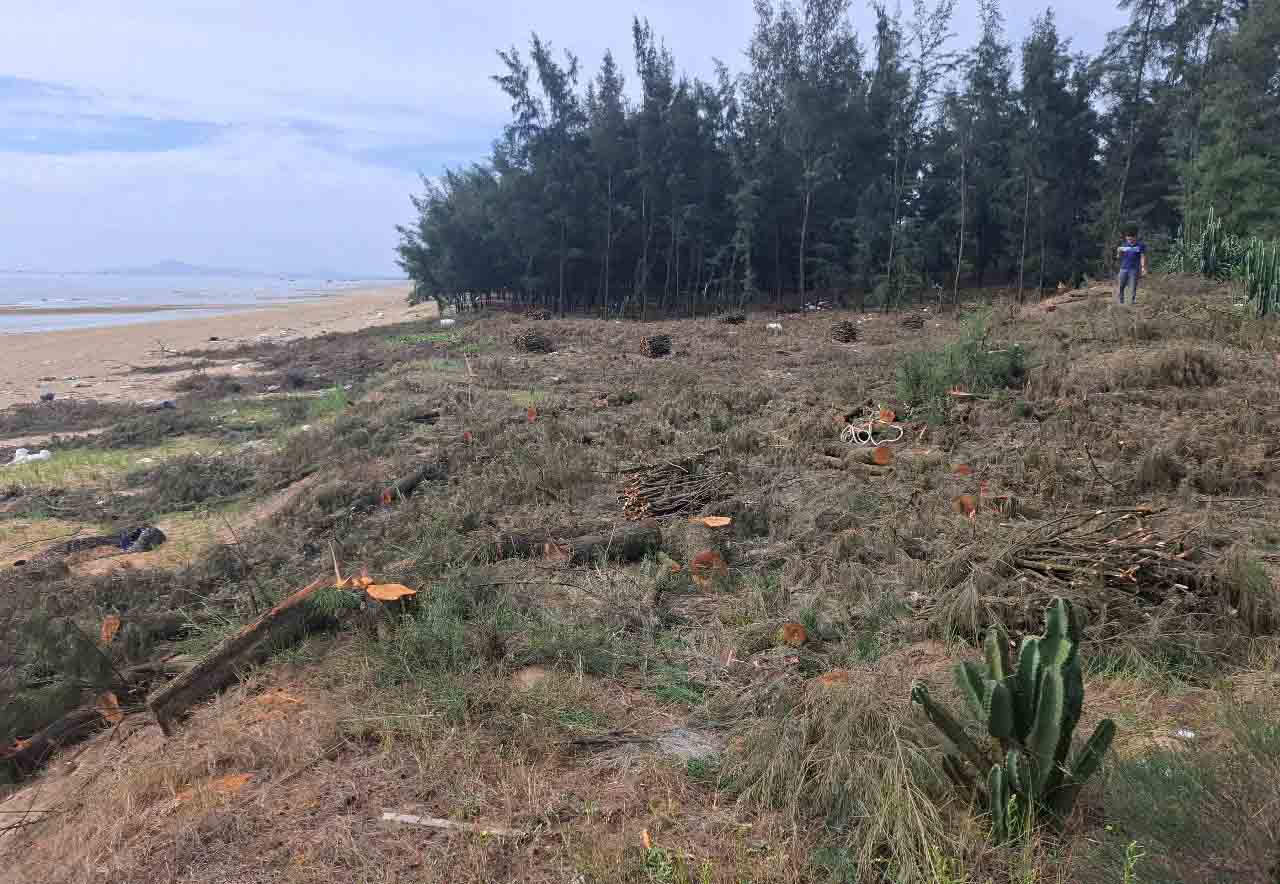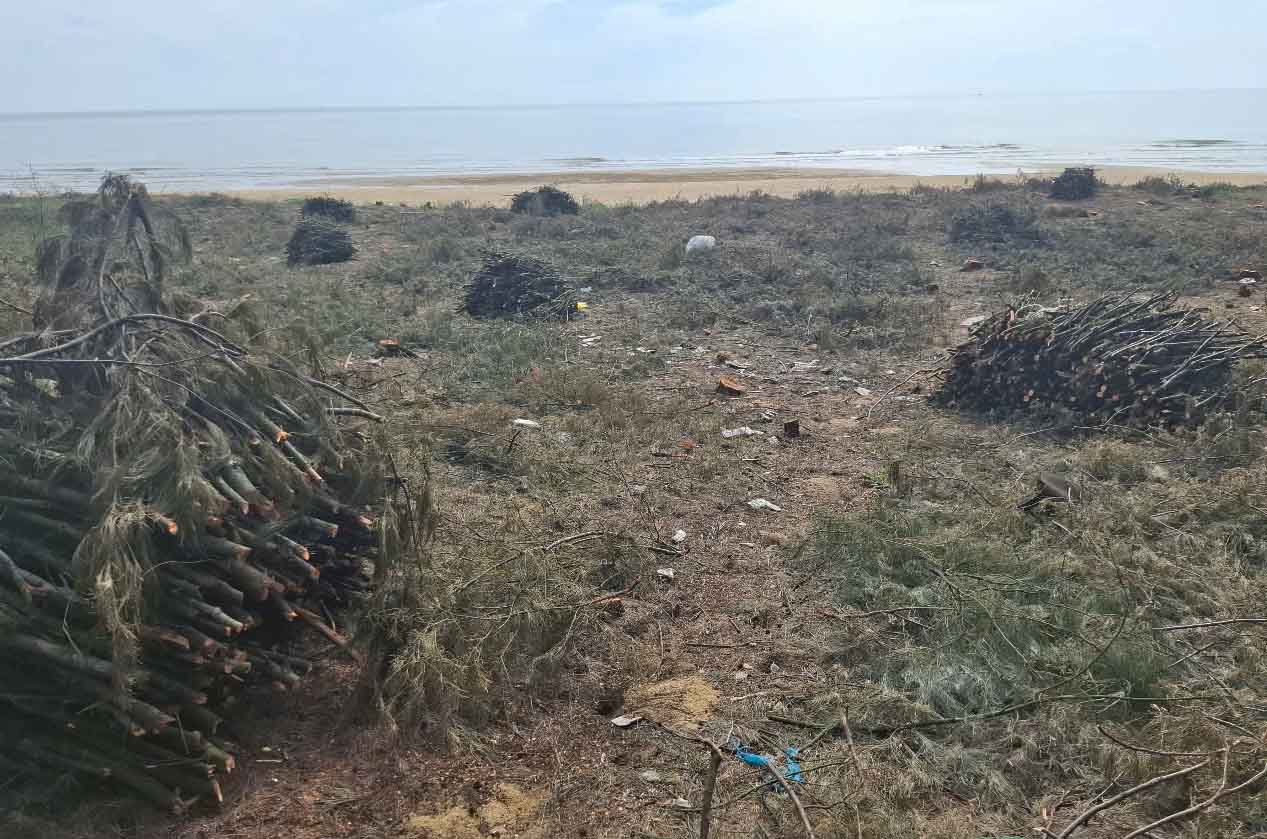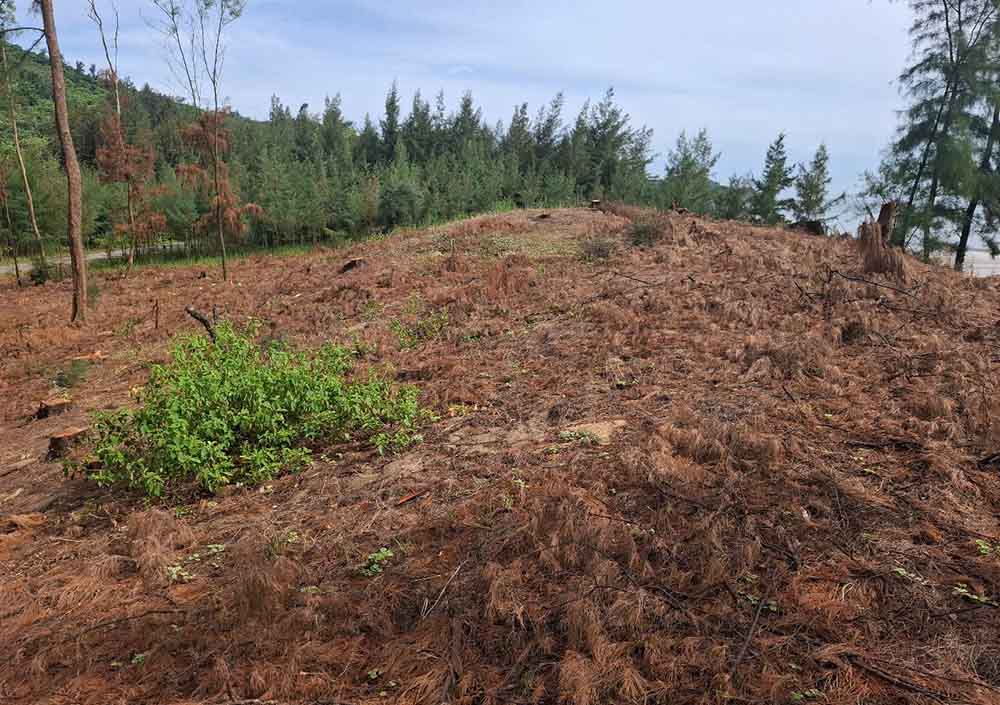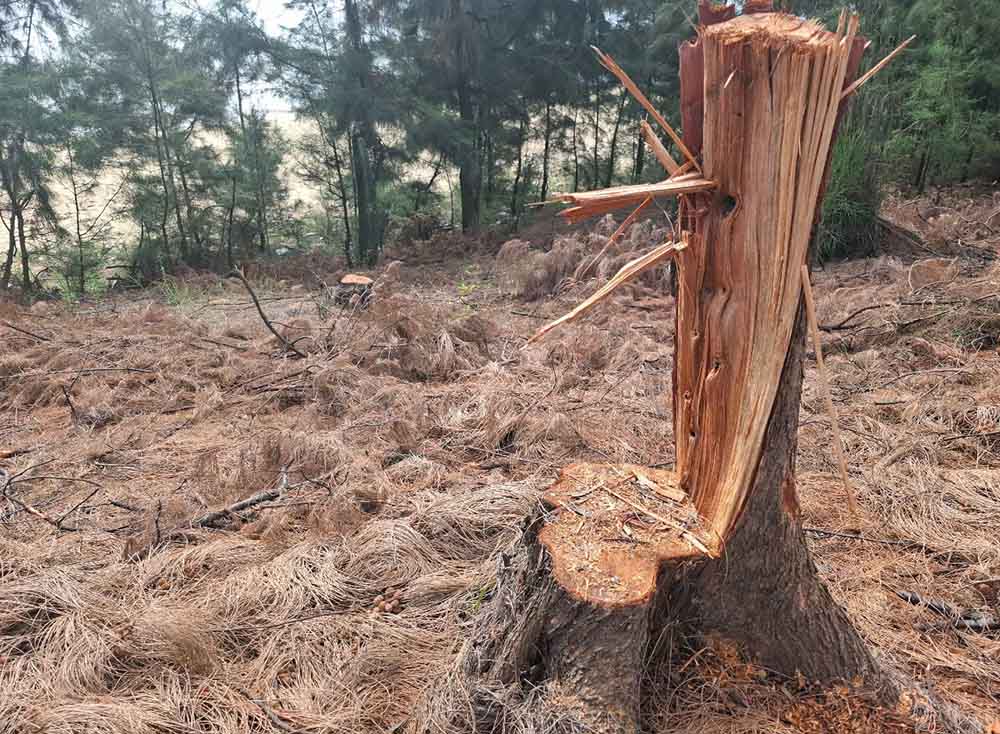Firewood trading
On July 2, Lao Dong Newspaper reporter recorded that in the coastal protection maple forest in Thach Khe commune, there were 2 locations where many people had cut down the maple trees with an area of about 300 m2 - 500 m2. In addition to the large wonk trips with a diameter of about 30cm, many small wrist trees were also cut down.
After cutting down, people sawed the trunks to make many short sections and gathered them on the side of the road to sell firewood.


Mr. Hoang Dinh Ngon - Head of Bac Hai village - said that 3 days ago, in the village, there was a household of Ms. Tran Thi Luyen exploiting the acorns that her family planted, but the police coordinated with the forest rangers to discover and suspend the exploitation.
According to Mr. Ngon, many years ago, many local households planted and cared for coastal mangrove forests themselves. When the forest is large, they exploit and sell firewood, then continue to plant new generations of trees. People have been planting free-range forests here for decades, before the time of planning the protective forest land and handing it over to the People's Committee of the commune for management.
"In previous years, they also exploited and replanted without seeing the authorities suspend the exploitation. Now that the new regulations for exploitation are in place, people must ask for permission, but they do not know. After the suspension, people are completing procedures to request exploitation, said Mr. Ngon.
Suspend only exploitation
According to the report of the Mobile Forest Ranger and Forest Fire Prevention and Fighting Team under the Ha Tinh Provincial Forest Ranger Department, on June 24 and 30, the unit coordinated with the People's Committee of Thach Hai Commune and the Thach Hai Commune Police to inspect and discovered 2 households exploiting Phi lao trees at the location with coordinates (548389-2038142) in block 6A, sub-zone 283, Thach Hai commune and the location with coordinates (547088; 2040337) in block 3, sub-zone 283, Thach Hai commune.
The exploited forest products are casuarina trees with about 135 trees, of which 100 trees have a trunk diameter of 5cm-20cm and 35 trees have a trunk diameter of 21cm -30cm. The type of forest exploited is planted forest, with a protective plan to block sand. The management is the People's Committee of Thach Hai commune.

Working with the leaders of the People's Committee of Thach Hai commune, it is known that the above trees were planted, cared for and protected by 2 households since 1990. They are Mr. Nguyen Van Thanh's household (Nam Hai village, Thach Hai commune) and Ms. Tran Thi Luyen's household (Bac Hai village, Thach Hai commune).
After that, the Mobile Forest Ranger and Forest Fire Prevention and Fighting Team coordinated with local authorities and Thach Hai Commune Police to make a record of the suspension of tree cutting and temporarily detained forest products for further verification and clarification.
According to the report, the coastal area of Thach Hai commune has a protective forest belt running along the coast with a belt width of about 20m to 200m.


Due to historical factors left in forest land management, in the 1990s, the coastal land of Thach Hai commune was an empty lot, so the People's Committee of the commune mobilized a number of households to invest in planting forests on forestry land in areas with no forests managed by the People's Committee of the commune. Up to now, households that need to exploit planted trees to increase income.
An officer of the Mobile Forest Ranger and Forest Fire Prevention and Fighting Team said that according to regulations, forest owners who want to exploit trees in protective forests must develop a plan and request approval from competent authorities before being exploited.
Also according to regulations, when exploiting white rice in cages, each cage must not exceed 3 hectares. The incident of 2 households in Thach Hai commune arbitrarily exploiting without completing the approval procedures is wrong. However, through actual inspection, each forest they exploited had a small area, only a few hundred m2, not exceeding 3 hectares/grass as prescribed.











